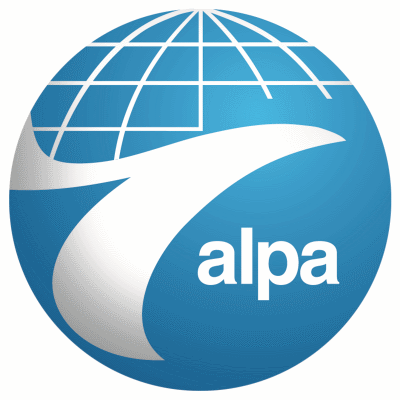Sun, Dec 12, 2021
“There Are Ways That 5G Can Be Deployed While Maintaining Our High Level Of Aviation Safety.."
In response to the recent airworthiness directive issued by the FAA, the Air Line Pilots Association, Int’l (ALPA) once again called on the mobile wireless industry to work cooperatively with the aviation community on implementing mitigations that will ensure an equivalent level of safety by protecting against radio altimeter interference.

Aviation industry representatives recently proposed a safety risk mitigation strategy for the Federal Communications Commission’s and mobile wireless industry’s consideration, which would reduce power levels in the vicinity of airports and heliports that are seen by aircraft, to reduce the safety risks of interference when the 5G signals are activated.
“Maintaining U.S. aviation’s high standard of safety is our primary goal, and aviation experts agree that the recent offer by Verizon and AT&T to place temporary restrictions on 5G transmissions simply do not provide enough protection against radar altimeter interference,” said Capt. Joe DePete, ALPA president. “There are ways that 5G can be deployed while maintaining our high level of aviation safety, and time is running out for the wireless industry and the broader aviation community to work together on implementing mitigations that will ensure that every passenger and cargo flight arrives safely without severe disruptions to aviation operations. We are hopeful that a recent proposal will serve as the basis for further discussion.”

Radio altimeters are key safety components found on all commercial airliners, business aircraft, and helicopters and are susceptible to interference by C-Band 5G wireless systems. During an interference situation, the hazardous or misleading radio altimeter data introduces a significant level of risk to the aircraft at the worst possible time—during approach and landing. It may also reduce or eliminate the functionality of terrain-avoidance systems. This potential 5G interference has been documented as a safety risk by the FAA and multiple aviation safety regulators globally and is the basis for the restrictive ADs issued today.
“Commercial aviation is the safest mode of transportation in the world, and that didn’t happen by accident. As a nation, we made it a priority—and ALPA intends to keep it that way. We commend the FAA for taking this necessary action to ensure that safety is maintained, but there can be no retreat from the extraordinary safety record we have achieved here in America. We must do more to protect these key safety components found on all commercial airliners. In the coming days ALPA will be providing additional information to our membership on operations in a C-Band 5G interference environment,” added DePete.
More News
He Attempted To Restart The Engine Three Times. On The Third Restart Attempt, He Noticed That Flames Were Coming Out From The Right Wing Near The Fuel Cap Analysis: The pilot repor>[...]
Make Sure You NEVER Miss A New Story From Aero-News Network Do you ever feel like you never see posts from a certain person or page on Facebook or Instagram? Here’s how you c>[...]
From 2009 (YouTube Edition): Leading Air Show Performers Give Their Best Advice for Newcomers On December 6th through December 9th, the Paris Las Vegas Hotel hosted over 1,500 air >[...]
Aero Linx: NASA ASRS ASRS captures confidential reports, analyzes the resulting aviation safety data, and disseminates vital information to the aviation community. The ASRS is an i>[...]
“For our inaugural Pylon Racing Seminar in Roswell, we were thrilled to certify 60 pilots across our six closed-course pylon race classes. Not only did this year’s PRS >[...]
 NTSB Final Report: Rutan Long-EZ
NTSB Final Report: Rutan Long-EZ ANN FAQ: Turn On Post Notifications
ANN FAQ: Turn On Post Notifications Classic Aero-TV: ICAS Perspectives - Advice for New Air Show Performers
Classic Aero-TV: ICAS Perspectives - Advice for New Air Show Performers ANN's Daily Aero-Linx (06.28.25)
ANN's Daily Aero-Linx (06.28.25) Aero-News: Quote of the Day (06.28.25)
Aero-News: Quote of the Day (06.28.25)




